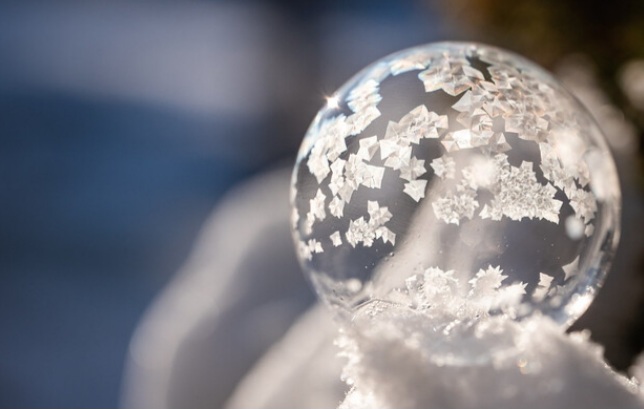**** Info via Environment Canada
Cold weather experiments at home
Bored at home this winter? Who said cold weather can’t be fun?
Here are a few “at home” science experiments that will help you appreciate our Canadian cold temperatures!
Creating snow bubbles
Essentially created with common household ingredients, cold weather and slow, steady breathing, snow bubbles have become a ocial media phenomena!
To create “snow bubbles” you need air temperatures of -20°C or colder, and absolutely no wind – the slightest breeze will make your bubble pop.

Check our WeatherCAN app to confirm that these weather conditions are occurring, and then mix:
- 200 ml of warm water;
- 35 ml of corn syrup;
- 35 ml of liquid dish soap; and
- 2 tbsp. of sugar.
Take the liquid mix in a small bowl, and store in the freezer. Lowering the mixture’s temperature will help your bubbles freeze faster when they land. After 30 minutes, give the mix another stir, and head outside. Suck the mixture very carefully half way up a straw (be careful not to swallow) and then gently blow it out through the straw to create a bubble. You can also attach your growing bubble onto a cold surface or directly onto the snow. Then, watch it quickly turn into a beautiful frozen snow bubble!
Turning hot water into a cloud of ice crystals:
To conduct this experiment you need outdoor air temperatures to be very cold (at least -25°C or preferably colder) and low relative humidity i.e. dry conditions. Outside humidity needs to be less than 30% – check the NOW page on your app for the latest humidity reading at your location.
When these weather conditions occur at the same time, head outside with a cup of boiling water. Very carefully throw the water AWAY FROM YOU, high into the air.

Shrink a balloon!
When the weather is super chilly, trapped pockets of air contract. It’s possible to visualize this with a balloon!
Blow a balloon up indoors, making careful note of its dimensions using string and a ruler. Now take the balloon outside for a few moments, and see how much less string is required to measure the dimensions. If you do the opposite and start the experiment outdoors, the balloon may expand enough upon walking inside that it pops! That contraction of gas is also why we have to fill our tires with more air in the wintertime.
Before heading out to play in the cold, make sure to dress warmly! Here are some cold weather safety tips.



